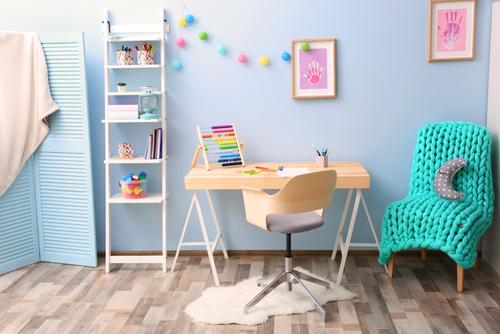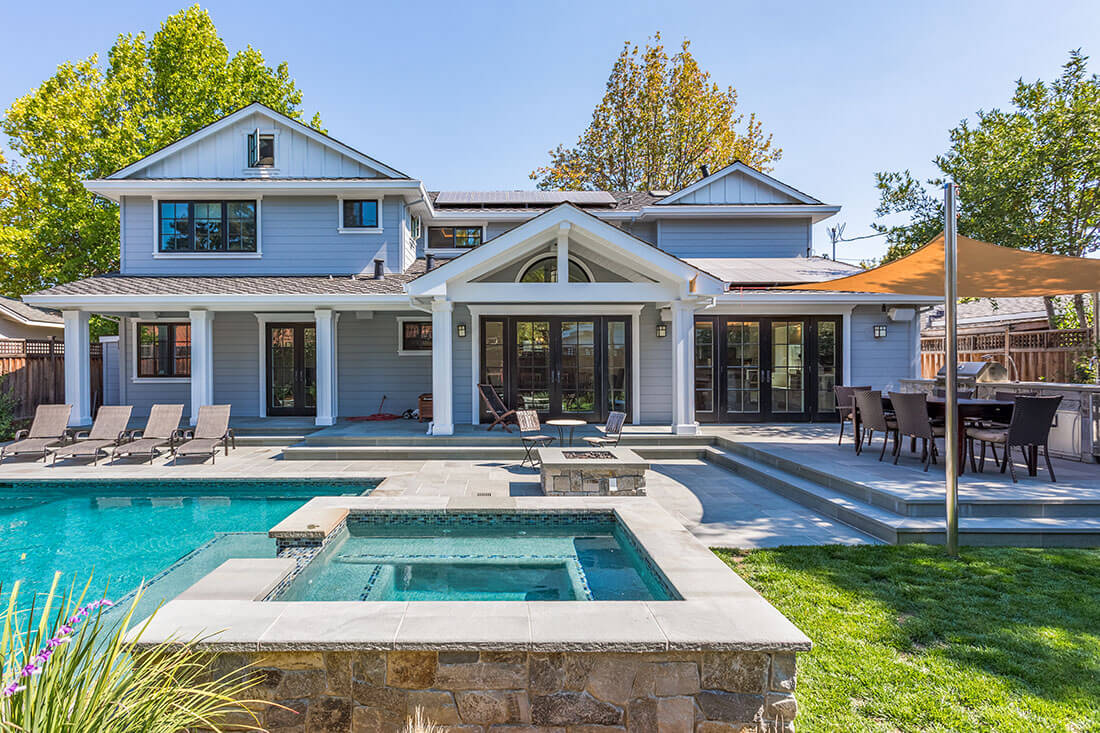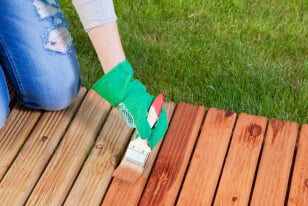Hey there, parents! Are you looking for ways to create a study space that will inspire your kids to focus, read, and excel in their homework? Well, you've come to the right place! What follows is an exploration of the wild and wonderful world of DIY study space ideas for children. We'll explore how to design a quiet and comfortable area that not only encourages concentration but also sparks children’s creativity.
DIY Study Space Ideas for Your Child
Finding the ideal location for your child's study space might feel challenging.
Think outside the box
It’s easy to think their bedroom might be the sensible location but this is not necessarily the case for all children. After all, it’s recommended that adults do not work in the same room in which they sleep.
The answer might be a dedicated nook in the living room or even a repurposed walk-in closet.
Study spaces are intended for focused activities
A study space is intended to be designated for work so when you’re in that space you know what you are supposed to be focusing on.
Quiet helps with attention
To find a good study space or homework station for your child, look for a quiet area in your home where distractions are minimal.
Minimize interruptions
Kids, like adults, get distracted. By minimizing interruptions children can focus on homework and other activities. It’s best to keep unnecessary tech out of study areas to avoid the temptation to check social media, play games, or find other ways to lose track of time.
The goal is to create a space allowing your child to concentrate without interruptions.
Good Lighting
A well-lit space creates a positive and energizing atmosphere for your child.
Keep it natural
Natural lighting plays an essential role in a productive study space. Ideally, set up the study space near a window to let in sufficient natural light during the day.
Let there be light
Depending on the age of your child, they may end up pulling late-night study sessions. A desk lamp or a stylish pendant light can offer sufficient lighting to work by.
Comfort is Key
Sitting on an uncomfortable chair for hours can be hard for kids. It’s also not a good idea for the long term, as habits they pick up in youth, including posture, can continue affecting them as they grow.
A good chair is a good investment.
• Invest in a comfortable chair and an ergonomic desk that are suitable for their height and size.
• Seek out chairs with proper back support and adjustable features.
• A fun cushion or cozy bean bag could make a nice addition to the space -remind them it’s not an ideal space for them to spend hours doing their homework.
Improved comfort means better productivity
It’s important to remember when kids feel comfortable, they are able to better focus on their work.
Keep your body in motion
Kids, like adults, should be encouraged to move around from time to time during their study sessions. Unlike adults, children are not extremely likely to sit still for hours on end. Still, it’s healthy for kids to get up every half hour or so to stretch their legs and move around a little bit.
Organization and Storage
A cluttered study space can hinder productivity and make it difficult for children to find materials when they want or need them.
Smart storage saves time
Incorporate storage solutions to keep everything neat and easily accessible. Install shelves, wall-mounted organizers, or colorful bins to hold books, stationery, and other supplies.
Organization prevents frustration
A tidy space fosters a sense of calm and helps kids stay organized, reducing the chances of losing important assignments or information.
Make It Personal
When brainstorming study space ideas, allow your child to help with the process of personalizing their space to meet some of their own aesthetics. Of course, you’re the one in charge and you have to live with this space too. For that reason, limit your child’s choices to ones that are small and not overwhelming.
Avoid the paradox of choice
Letting them learn to make a few choices early can have a powerful impact on a child’s feelings of empowerment and their ability to take control of their spaces.
Stay motivated
Attaching a corkboard or a magnetic board to the wall can give your child the opportunity to display artwork, achievements, motivational thoughts and ideas, personal interests, and activities they are looking forward to on the calendar.
A chalkboard or a whiteboard can be useful for quick notes and brainstorming sessions.
Have fun with décor
It’s a good idea to let your child choose decorations, like posters, prints of famous paintings or images or their favorite cartoon characters.
The study space should reflect your child’s unique personality and help fuel their imagination and creativity.
Noise Control
Creating a quiet study space does not necessarily mean absolute silence. For some children, a certain amount of background noise is actually helpful for them when it comes to concentrating on activities. That being said, it's important to limit sounds that might cause distractions. A white noise machine could be an easy and inexpensive solution.
Contain the noise
Soft furnishings like curtains, rugs, or acoustic panels to absorb echoes and reduce outside noise.
If your child enjoys listening to music while studying, consider quality headphones or a small Bluetooth speaker.
Tech and Connection
Today, limiting screen time is a struggle for all parents. Technology plays a significant role in education and cannot be avoided.
Limit distractions
When you want your child to focus on their studies, you’ll want to try your best to limit distractions and temptations that can easily draw their attention away from homework.
Organize tech
To make your child’s study space tech-friendly in a sensible way, make sure there is ample access to power outlets for charging devices such as laptops and tablets. You may want to consider organizing the many cables and wrapping them or otherwise getting them out of the way to avoid a trip hazard.
If possible, providing a docking station or wireless charging pad for devices can limit frustrations associated with getting connected to educational materials and keeping devices charged and operational.
Natural Elements
Bring nature into your child’s study space to create a calming atmosphere. This includes incorporating natural lighting (if possible). Indoor plants can add both visual appeal and promote a sense of calm.
How to Budget for a Making a Study Area for Your Child
When reflecting on study space ideas for your child, start by thinking about items you already have around your house that can be repurposed.
Spent a little extra on a homework desk
An old table or desk might be sufficient for your child if it’s the right height. It’s worth taking extra time to brainstorm study space ideas as a homework desk is one of the most important components of a study space and can help your child avoid back problems later in life.
Check Out Local Marketplaces
Between thrift stores, Facebook Marketplace, NextDoor, Craigslist, consignment shops, and garage sales, you should have no problem finding unique and affordable furniture and decor that can help you create a personalized study space for your child.
Artwork and Décor
There’s no rule saying you have to go out and purchase a fancy painting or other items to make a homework space unique for your child.
There’s a good chance your child will be just as happy, if not more happy, with the opportunity to create their own artwork using materials you can buy at a local arts and crafts store. It’s an opportunity for your child to get creative and you can save money at the same time.
Free Resources
Nowadays, there are a ton of free resources online, like motivational posters, informational materials, charts, and study guides full of interesting facts, that can be downloaded for free.
Check out Pinterest for DIY ideas that can help you have fun with decorating your child’s study space.
Don’t Underestimate Dollar Stores
Dollar stores and related discount retailers often carry affordable stationery, organization materials, and basic school supplies that can be used to create a fully functional study space.
Discount stores are great places to acquire storage bins to desk accessories without breaking the budget.
Swap with Other Parents
Reach out to fellow parents and see if they have any study space items they no longer need. You might be able to swap or borrow furniture, storage solutions, or decorations, saving both money and resources.
This is especially true if you know parents who have children rapidly age out of items that are still in perfectly usable condition. They are probably more than happy to unload the old stuff to make space for age appropriate materials.
DIY Organizers
Instead of buying expensive desk organizers, get creative and make your own. Try using objects like mason jars to hold pens and pencils, repurpose old shoe boxes as storage compartments, or create a corkboard from an old picture frame.
DIY organizers are not only cost-effective but can be easily customized based on your child's needs and preferences. Plus, you don’t need to worry if these items don’t last forever.
Borrow Books and Resources
Remember, just because it’s used doesn’t mean it’s not new to you.
Instead of purchasing new books or study materials, consider borrowing them from libraries or friends.
Utilize online resources, such as e-books or educational websites, which often offer free or discounted access to a wide range of reading materials.
Prioritize the Essentials
Focus on investing in items that will have the most impact on your child's study experience. A comfortable, quality chair and an age appropriate desk are must-haves. Choose quality for these essentials and consider budget-friendly options for less needed items and decor.
Frontdoor is Ready to Help
Frontdoor® offers a variety of ways to get things done. Whether you prefer connecting via video chat with trade industry Experts, receiving a list of vetted Pros for repairs, or utilizing our how-to library to DIY, we've got you covered.
With Frontdoor, completing tasks has never been easier, so why wait? Open the Frontdoor and start taking control of your home repairs.
Was this article helpful?






